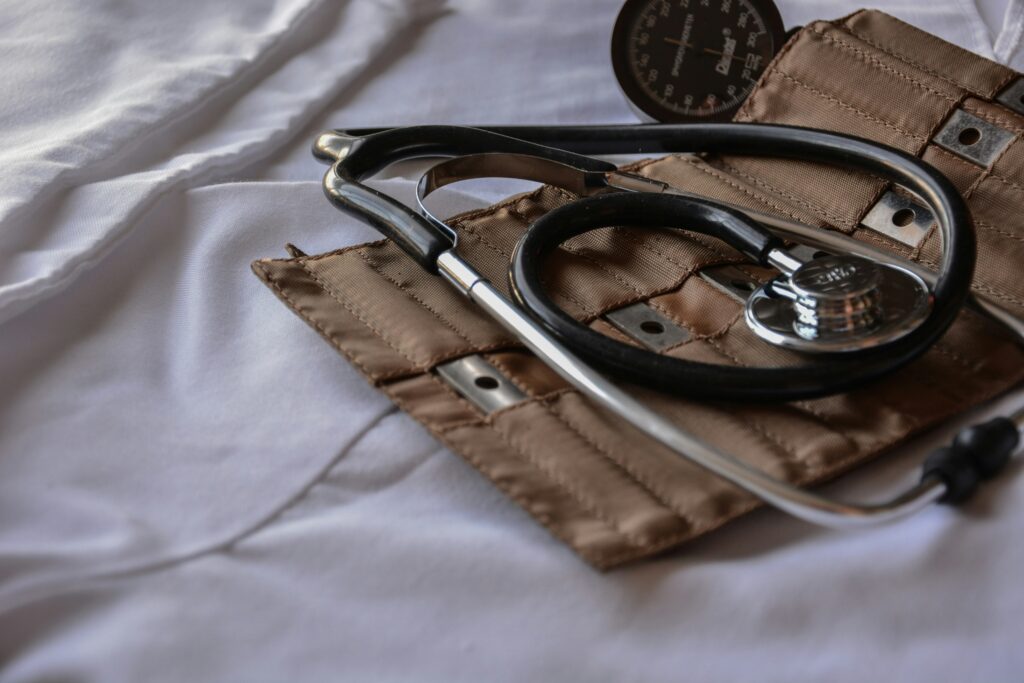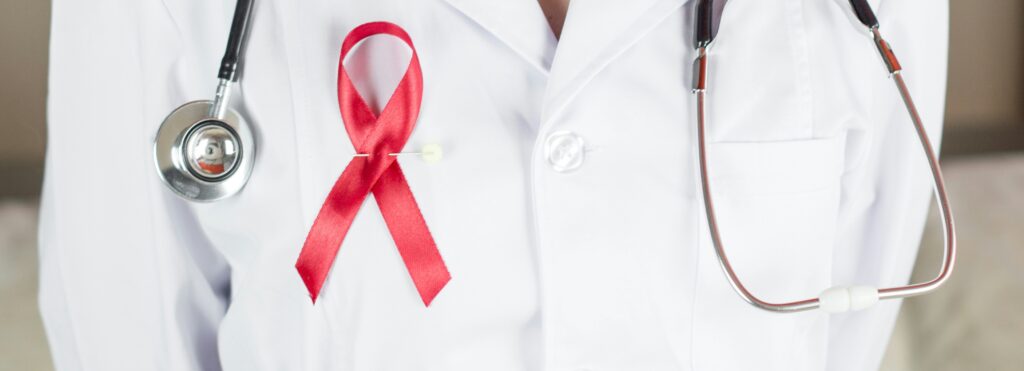News Team member Alexa Morales describes the need for new prenatal nutrition guidance to include fiber, as it promotes stronger microbiomes and better health outcomes in mothers and their babies.
The People Side of Research: Dr. Samantha Veronica Hill
Addressing HIV care for Black adolescents after watching the HIV epidemic hit Atlanta
By Aanya Ravichander
Samantha Hill, MD, MPH, was a typical kid growing up in the eighties and nineties in Atlanta. Like many others, she grew up watching the HIV epidemic bloom first hand.
Dr. Hill recalls constantly hearing about this novel disease that spread via intravenous drug use and unprotected sex. She wondered about the lack of protective messages aimed at herself and her peers in her Atlanta classrooms, where sex education was poor, where drug use was rampant, and where no one was talking about HIV. The experience stayed with her.
Years later, Dr. Hill built her life and career around her passion to change this reality for future generations.

Dr. Hill is an Assistant Professor of Pediatrics and Attending Physician at Emory University School of Medicine and Children’s Healthcare of Atlanta. Her research focuses not on creating the medicines to target HIV, but on the critical and oft-ignored delivery of care to vulnerable populations. As an adolescent physician, she works with the age range 11 to26, which is disproportionately affected by sexually transmitted infections or STIs. Data from the Center for Disease Control in 2021 showed that members of this group accounted for a stunning 19% of new HIV diagnoses. The numbers are even more troubling in the South, which is home to seven of the 10 states with the highest STI rates. People who identify as Black/African American and Hispanic/Latino also face a more significant disease burden in relation to their population size.
Dr. Hill’s work directly addresses these issues, revolving around care for adolescent populations in the South with a specific focus on underserved Black youth. Her goals include improving sexual health knowledge and empowering patients to make informed decisions using HIV prevention strategies.
Dr. Hill uses mixed method research techniques, blending patient and caregiver interviews with quantitative methods, to get a well-rounded perspective of key challenges. This method is specifically targeted at uncovering the experiences of the people directly affected by HIV to address deep-seated cultural and socioeconomic factors that impact care.
Her journey wasn’t easy. Dr. Hill recalls feeling completely lost when she walked into her first general chemistry class during her freshman year at Duke University.
“It’s probably the metaphor of my life, ” says Dr. Hill. “There’s a lot of doors I walked up to and I’m like, I can’t even read what language it’s in. It seems like that’s graduate level and I’m in first grade. Despite this, I can actually understand what my resources are, what my support is, and identify those things and use those things to accomplish the task that’s set before me.”

This is the mantra Dr. Hill continues to carry through her work. She decided to do work at the National Institute of Health in D.C. following her graduation from Duke. She realized very quickly that basic science was not for her: she was too much of a people-person. Dr. Hill enjoyed volunteering, mentoring underserved youth, and acting as a support group coordinator for an HIV clinic during her time outside of lab.
She then went on to Morehouse to complete her MD but was now itching to find her way out of the South. Dr. Hill wanted to explore the breadth and depth of care in places where more resources are allocated to STI prevention. This took her to Sidney Kimmel Medical College and A.I. DuPont Hospital for Children in Philadelphia to complete her pediatric residency.
“It just gives you a whole different perspective when you’re able to train somewhere else and be like look at the vision they have,” says Dr. Hill. “It was like night and day.”
She took this new perspective back to the South at the University of Alabama at Birmingham. It was a perfect fit; it was the only program that had an HIV clinic in the adolescent medicine department. Dr. Hill then noticed how little research focuses on young people, especially in the South during her fellowship. She realized how healthcare providers needed to adapt their tools and techniques to these populations. How do you ask a 13-year-old whether they are sexually active? How do you communicate the risk of STIs and emphasize testing to young women, who tend to tune out risk-based language? These questions inspired Dr. Hill to initiate research grounded in her clinical care experiences.
“She emulates the type of physician that I hope to become, “says Onyie Eze, an M.D. candidate at Emory University School of Medicine and one of Dr. Hill’s mentees. “Someone who is using both her clinical and research practice to advocate for patients, empower them, and make sure they have all the knowledge they need to make the right decisions for themselves.”
Interrogating gaps in care
There have been significant advancements in HIV care and prevention, including pre-exposure prophylaxis (PrEP), post-exposure prophylaxis (PEP), antiretroviral therapy (ART) and, most recently, with long-acting injectable therapies. Several barriers, such as social stigma and a lack of proper sex education, however, limit access to these therapies. Often, research is hyper-fixated on the creation of medications, overlooking the distribution of treatments and the need for community involvement in the delivery of care. Because of this, research suggests that Black individuals had lower adherence to therapies.
Dr. Hill’s work focuses on this progression of care. One of her studies, published in Open Forum Infectious Diseases, works to understand gaps in care regarding specific patient populations that miss HIV visits in Alabama. Researchers found that older youth with HIV and patients who at risk for transmission were more likely to miss their HIV visits at the clinic.
Another one of her recent studies, published in the journal Sexually Transmitted Diseases, conducted in-depth interviews with Black adolescent girls and young women, as well as with healthcare providers working with these patient populations in the Southeast. The study found that conversations surrounding HIV prevention and sexual health were not occurring consistently for this patient population. The research team then asked both the providers and the patients about potential strategies to improve discussions about HIV. Some of these strategies included improving sexual health education for both providers and adolescents, normalizing these conversations in clinical settings, and engaging communities to promote conversations on these topics.

“She really wants to make sure that we’re hearing the voices of the people that we’re working with,” says Dr. Latesha Elopre, MD, MSPH, an Associate Professor in the Division of Infectious Disease at the University of Alabama at Birmingham, and mentor of Dr. Hill. “She’s always one of the main voices in the room that’s trying to make sure we recenter. To make sure we’re always thinking about, what do they want? What are they saying? What do they need?”
Another key issue highlighted in one of her studies, published in the Journal of the International Association of Providers for AIDS Care, describes the prescription of PrEP for Black adolescent girls and young women in Alabama. Her team conducted interviews with healthcare providers who work with this population, exposing significant barriers in prescribing the medication, including the PrEP options available and providers’ lack of familiarity with CDC guidelines for PrEP.
“The future of HIV research is going to be implementation science,” says Dr. Elopre. “The biggest issue is that we are not effectively implementing these interventions in communities and in spaces where they’re really needed.”
Using apps to reach teens
The National Institute on Mental Health awarded Dr. Hill a K23 research grant to conduct research on the implementation of PrEP in the South, specifically in Black adolescent and young adult populations. She plans to utilize the app “HealthMpowerment”, a digital platform used to provide health and wellness information to younger populations in the United States. Refining this app could improve sexual health knowledge in youth populations and increase communication between youth and adult support systems.
Dr. Hill’s ultimate goal for her research is to expand her work into a community-based participatory research program, in which the community drives the questions. She hopes to work side by side with communities in order to equitably address the health problems being faced.
Outside of research, Dr. Hill stays grounded in her clinical care, which keeps her sharp and motivated. She cares for adolescent and young adult patients at Ponce HIV clinic, in addition to her work at Emory and Children’s Healthcare of Atlanta. Dr. Hill describes how she is constantly juggling and deciding if the patient would benefit from “blunt Dr. Hill” or “chill Dr. Hill”. She works to create an environment that is beneficial for each individual patient.
“Every patient’s different, ” says Dr. Hill. “There’s a big art to it. There’s the art of medicine. The science is they have to have alone time [from parents in the clinic]. The science is we talk about things that are developmentally appropriate for the patient. Art is the way in which you do it.”
Dr. Hill’s work is founded in “wholeness and wellness” for herself and for her patients. She always reminds herself that each patient is someone’s child, especially when dealing with tough patients and families. Does not matter their age, does not matter if they are saying something harmful, this is someone’s child, and she is going to take care of them.
Dr. Hill brings her identity as a Black woman with her in her patient communications. It is rare to see people in HIV care who look like the communities they serve. Her identity is part of the “art” of her practice.
“It’s easy for me to interact with them and see them for who they are, because that’s all I want people to do for me,” says Dr. Hill. “I want people to see me for who I am versus the labels that may automatically be assigned to me.”
Dr. Hill continues to redefine what it means to be an academic and clinician, bridging her impressive scholarly research with impactful achievements in the real world “art” of clinical care. The kid that grew up in the HIV epidemic of the eighties found her calling.

